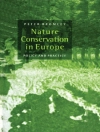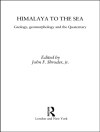This book presents an overview of different institutional arrangements for tourism, biodiversity conservation and rural poverty reduction in eastern and southern Africa. These approaches range from conservancies in Namibia, community-based organizations in Botswana, conservation enterprises in Kenya, private game reserves in South Africa, to sport hunting in Uganda and transfrontier conservation areas. The book presents a comparative analysis of these arrangements and highlights that most arrangements emerged in the 1990s through either a decentralized or centralized change trajectory that was sponsored by donors. They aim to address some of the challenges of the ‘fortress’ types of conservation by combining principles of community-based natural resource management with a neoliberal approach to conservation, evident in the use of tourism as the main mechanism for accruing benefits from wildlife. The book illustrates the empirical relevance of these novel arrangements by presenting their growth in numbers and discuss how these arrangements differ in their form. With respect to the conservation and development impacts of these arrangements, we show that they have secured large amounts of land for conservation, but also generated governance challenges and disputes on tourism benefit sharing, affecting the stability of these arrangements to generate socioeconomic and conservation benefits.
表中的内容
Preface.- Chapter 1. Novel institutional arrangements for tourism, conservation and development in eastern and southern Africa.- Chapter 2. From exploitation to ownership: Wildlife-based tourism and communal area conservancies in Namibia.- Chapter 3. The Tsiseb conservancy: how communities, the state and the market struggle for its success.- Chapter 4. Community-based natural resource management in Botswana.- Chapter 5. Community Empowerment through Community-based Tourism: The Case of Chobe Enclave Conservation Trust in Botswana.- Chapter 6. Private game reserves in Southern Africa.- Chapter 7. False legitimacies: The rhetoric of economic opportunities in the expansion of conservation areas in southern Africa.- Chapter 8. Hunting for conservation? The re-introduction of sport hunting in Uganda examined.- Chapter 9. The evolution and progression of Transfrontier Conservation Areas in the Southern African Development Community.- Chapter 10. The Selous-Niassa Transfrontier Conservation Area and Tourism: Evolution, Benefits and Challenges.- Chapter 11. Promoting conservation tourism: The case of the African Wildlife Foundation’s tourism conservation enterprises in Kenya.- Chapter 12. Implementing Tourism-Conservation Enterprises: a comparison of three lodges in Kenya.- 13. A dynamic perspective on institutional arrangements for tourism, conservation and development in eastern and southern Africa.- Index.












